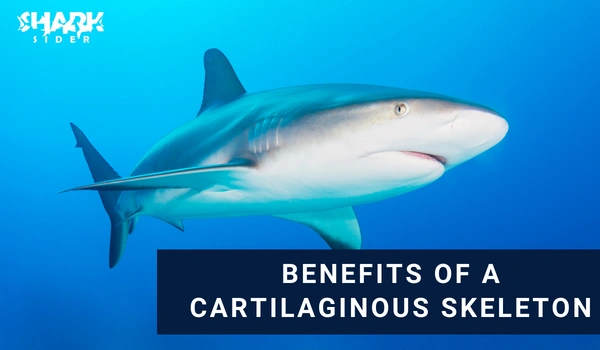Do sharks have bones? This is a question that has puzzled marine biologists and ocean enthusiasts alike for centuries, as these underwater predators seem to be able to navigate through the water without relying on any skeletal structure.
There are conflicting theories out there about just how these mysterious fish can move with such grace and agility – are they using their muscular tissue or are specialized cartilage structures providing support?
In this blog post, we’ll dive deep into the rich anatomy of sharks in order to understand exactly why they don’t need bones to stay afloat. We’ll explore the various functions of shark skeletons and discuss some surprising characteristics that might surprise even die-hard shark fans. Get ready to discover why being boneless isn’t always a bad thing!

Do sharks have bones?
Sharks are from the class Chondrichthyes, which means cartilaginous fish. Unlike typical bony fish, they do not have an internal skeleton composed of bone. Instead, these animals are supported by a more flexible and lightweight skeleton made of cartilage. However, unlike most other vertebrates, shark bones are not filled with marrow and they typically lack calcified structures like those found in humans. Instead, this specialized form of cartilage provides a lightweight yet strong framework for the animal’s body and allows them to cruise through the water with remarkable speed and agility.
So why doesn’t every species of shark have bones? Through years of evolution, sharks developed streamlined anatomy which made them perfectly suited to life underwater. Having fewer bones allowed them to become faster swimmers as well as able to navigate tight spaces without getting stuck or hurt by sharp rocks. In addition, the lack of bones helps lower their density in water, allowing them to float more easily.
Even though sharks don’t have a traditional skeletal system like us humans, they still require some form of structural support. This is where specialized cartilage structures come into play. Sharks possess something known as “primitive vertebrae” which are connected to flexible discs and provide additional strength while helping reduce drag in the water. These primitive vertebrae can also act as anchors for the shark’s powerful muscles and organs, providing them with an extra layer of protection from potential predators or injuries.
What are the benefits of having a skeleton made of cartilage?
For one, cartilage is much lighter than bone, which reduces the overall weight of the shark and gives it more maneuverability in the water. Additionally, cartilage does not calcify like bone does and therefore can be flexed without breaking or causing pain to the animal. This means that sharks are able to twist and turn their bodies with ease in order to better spot prey or evade predators.
Finally, cartilage also encourages the shark’s body to heal more quickly than a bone-based skeleton would. This is because cartilage can adapt its shape easily without needing to go through a long healing period like bones do – making it an invaluable asset for fast-moving species living in dangerous environments like the ocean.

So there you have it – sharks don’t need bones to stay afloat! Even though these creatures lack the traditional skeletal framework of us land dwellers, they still possess specialized cartilage structures which provide them with all the support they need to survive and thrive underwater.
Of course, not all sharks rely solely on cartilage for their bodies’ structure – some species such as the Nurse Shark have additional “true bones”, including rib-like structures that provide extra support for their bodies. However, these species still lack the calcified bones found in other vertebrates, so they don’t offer the same level of protection as humans or other animals with a more conventional skeletal system.
Is a shark’s jaw made of bone?

No. This is because the structure needs to move quickly and smoothly in order for the animal to capture its prey efficiently. Having a bone-based jaw would slow this movement down and make it harder for sharks to catch their food.
Are shark teeth bone or cartilage?
Shark teeth are composed of dentin and enamel, both of which are hard tissues but not considered to be bone. These materials help protect the shark’s teeth from damage and wear and tear during feeding. As a result, sharks are able to maintain sharp sets of teeth throughout their entire lives without ever needing to replace them as humans do.
Did ancient sharks have bones?
No. Fossil evidence suggests that all ancient sharks lacked a true bone-based skeletal system, relying instead on primitive cartilage structures to provide their bodies with support and flexibility. This means that sharks have been without bones for millions of years!
Conclusion
Sharks are incredible creatures that don’t need bones to swim and survive. Instead, they rely on specialized cartilage structures which provide them with the strength and protection they need to thrive in their aquatic environment. Not only does this make them more maneuverable and durable than other species, but it also means that sharks have been without bones for millions of years. Truly, the anatomy and physiology of these animals are truly remarkable!
